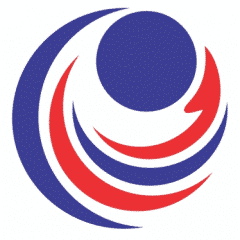A heart with weakened pumping function- Causes, Diagnosis, and Treatment
Dilated Cardiomyopathy is a disorder of cardiac muscle (heart muscle). The heart grows to an abnormal size, thus affecting its pumping function.
The enlargement starts in the left ventricle, which is the main pumping chamber of the heart. Further, it stretches the normally thick walls of the ventricles making them thin or dilated. This entire process makes the pumping ability inefficient.
Cardiomyopathy causes
Although there are no apparent causes for cardiomyopathy. A variety of agents like infections, exposure to toxic substances, or metabolic reasons could be the precursors. Diabetes, obesity, alcohol consumption, high blood pressure, and drug abuse poses a greater risk. Furthermore, complications during late pregnancy, certain cancer medications, prolonged exposure to cobalt, lead, and mercury increases the risk.
Dilated Cardiomyopathy Signs and symptoms
Dilated Cardiomyopathy develops over a period of time. Many of its symptoms are not visible in the initial stages. A person with advanced cardiomyopathy may experience chest pain, shortness of breath and sometimes nausea. Other signs include swelling of ankles, legs, and feet, abdominal swelling due to fluid build-up. In some cases, there is a heart murmur. Some people also experience syncope (fainting).
People with cardiomyopathy or enlarged heart might not experience any symptoms. However, later in life, it might be life-threatening. Let’s know what actually occurs in this condition.
- Reduced blood flow to the heart muscles
- Irregular heart rhythm (Read more about arrhythmias)
- High Blood Pressure
- Coronary Artery Disease
- Blood clots, causing stroke or heart attack
- Heart Failure
- an eventual fatal outcome
- arrhythmogenic right ventricular dysplasia
Dilated Cardiomyopathy Diagnosis and Treatment
Diagnosis
- A normal Chest X-ray can easily image the enlargement of the heart.
- Along with chest X-ray, doctors also advise a 12-lead ECG. The non-invasive 12 leads, placed on different areas of the body, helps to generate a broad analysis. This is a useful detection technique for any abnormalities in the heart rhythm. An ECG might show atrial fibrillation or tachycardia, or other rhythm related abnormalities.
- Catharized angiography is helpful in ruling out ischemic heart disease.
- Often, Cardiac MRIs also helps to provide diagnostic evidence.
- Genetic testing is advised in certain patients. This procedure indicates any gene mutations and help doctors plan an appropriate course of action.
Treatment:
An enlarged heart cannot be treated 100%. However, its symptoms and effects can be managed.
- Artificial pacemakers or Implantable defibrillators help to keep the heart rhythm in check. These devices can potentially save the patient from undergoing cardiac arrest.
- Medications such as beta-blockers, diuretics, anticoagulants, and ACE inhibitors can slow down the progression of the disease. In severe cases, the patient may be advised to opt for heart transplantation.
Precautions
- It is advised to have a complete cardiac check-up every year after you turn 40.
- Consult a doctor for a cardiac checkup if you experience any symptoms.
- Avoid smoking, include light to moderate exercise in your daily routine. An active lifestyle helps to keep the heart in a healthy condition.
- Stress levels can also accelerate the progression of an enlarged heart.
- People with a family history should consult a doctor. If possible, also undergo genetic screening.
- Genetic screening benefits people with inherited cardiomyopathies who are not showing any apparent signs or symptoms.

Thank you for providing this information about the heart pumping function. Heart pumping is the main function of the body for blood circulation. Useful for readers.